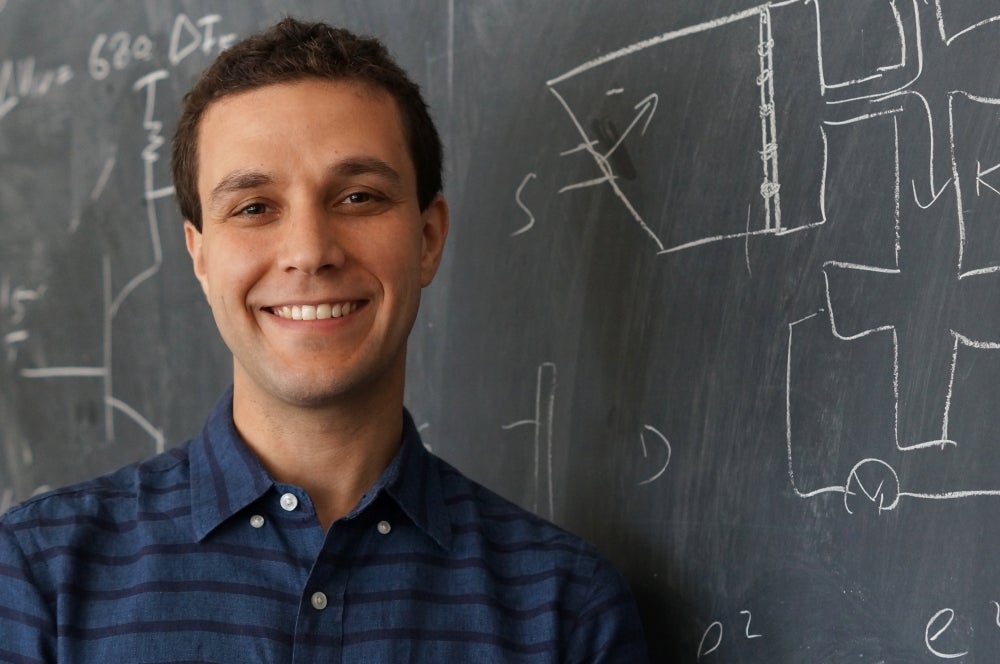
2-D Physics
In two dimensions, where states of matter are possible that cannot otherwise be realized, the laws of physics are different.
This is the scientific playground of UC Santa Barbara experimental condensed matter physicist Andrea Young. His group focuses on creating electronic devices where such states are realized, and develops measurement techniques to probe their macroscopic quantum mechanical properties.
In recognition of his accomplishments and to allow him to continue his work in this area, the David and Lucile Packard Foundation has awarded Young a 2016 Packard Fellowship for Science and Engineering. As one of this year’s 18 innovative early-career recipients, Young will receive a grant of $875,000 over five years to pursue his research.
“We are thrilled that Professor Young’s great promise and exciting research have proudly been rewarded with this prestigious and competitive fellowship,” said Chancellor Henry T. Yang. “The Packard Foundation has recognized Andrea’s passionate, creative and innovative work and his incredible potential to make groundbreaking discoveries. We at UC Santa Barbara look forward to his many future contributions as he continues to explore the frontiers of electronic states in quantum materials.”
Young works with van der Waals heterostructures, which consist of layered stacks of two-dimensional materials, most notably graphene. This single-atom-thick material can be engineered to host a variety of exotic states — for example, topological insulators, where current can flow unimpeded on the sample boundary while the two-dimensional bulk remains electrically insulating.
Using careful device design and large magnetic fields, Young can tune the electronic signature of the graphene to realize new states of matter. Among other projects, the Young lab is focused on demonstrating emergent non-Abelian quasiparticles — collective modes of many electrons that behave as if they are made of fractions of an electron.
“Graphene gives us a lot of knobs — over device structure, over the nature of the quantum mechanical wave functions and over how the electrons interact with each other,” said Young, an assistant professor in the Department of Physics. “All together that means we can tackle really hard problems — how do interacting electrons organize themselves? — with enough control that we can actually find the answer and possibly use it.”
Young earned his bachelor’s and master’s degrees as well as his doctorate from Columbia University. He has been a visiting scientist at the Weizmann Institute of Science in Israel and a Pappalardo Fellow at the Massachusetts Institute of Technology. He is also the recipient of the 2016 McMillan Award for outstanding contributions in condensed matter physics.
Among the nation’s largest nongovernmental fellowships, Packard Fellowships are designed to allow maximum flexibility in how the funding is used. Packard Fellows have gone on to receive significant awards and honors, including the Nobel Prize in physics, the Fields Medal, the Alan T. Waterman Award and MacArthur Fellowships.
“Year after year, we continue to be inspired by the Packard Fellows’ creativity, leadership in their fields and important breakthroughs in various fields of science and engineering,” said Frances Arnold, a professor at the California Institute of Technology and chair of the Packard Fellowships Advisory Panel. “The revolutionary work of these talented researchers has the ability to profoundly impact the lives of their students and all of us in the world at large.”



